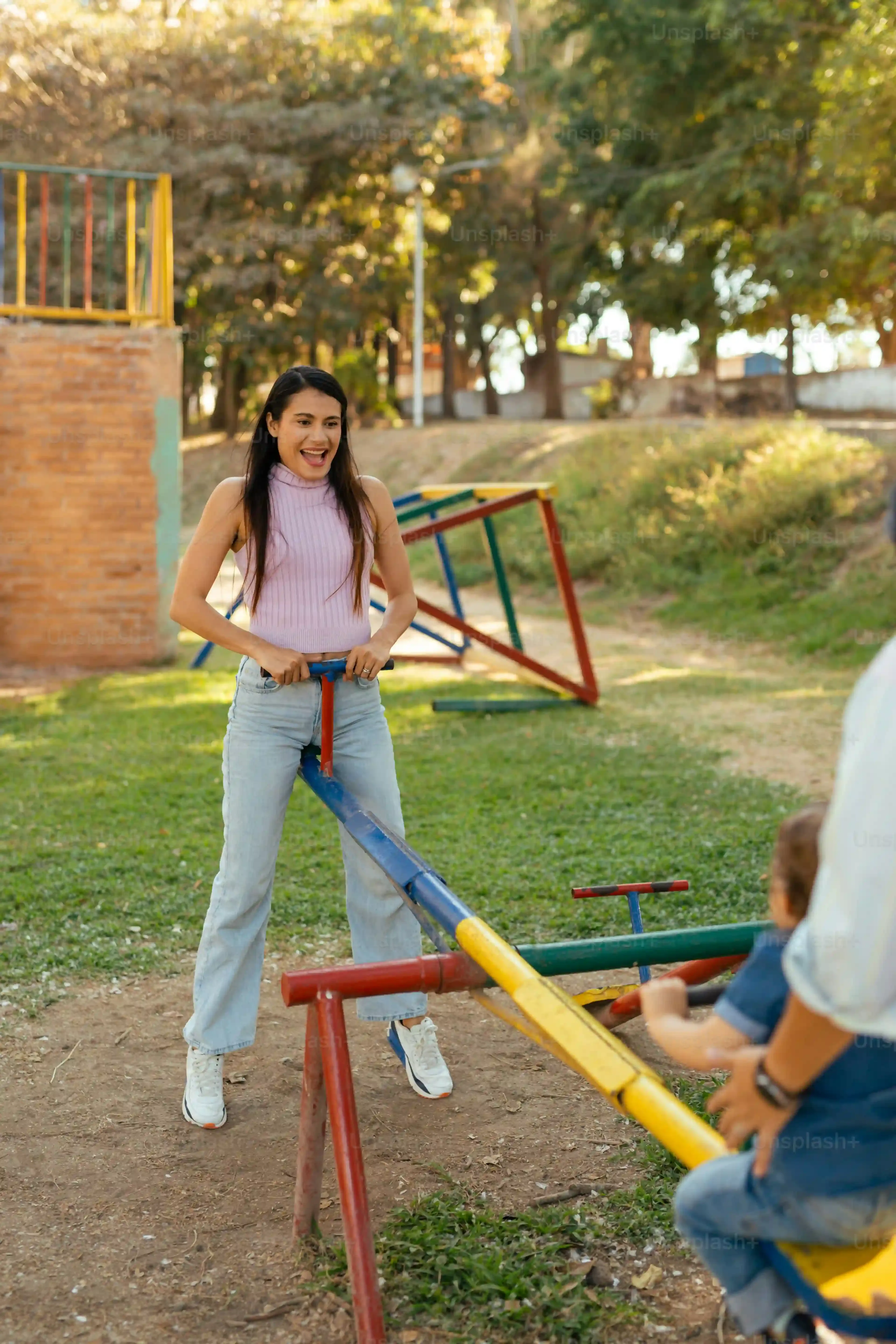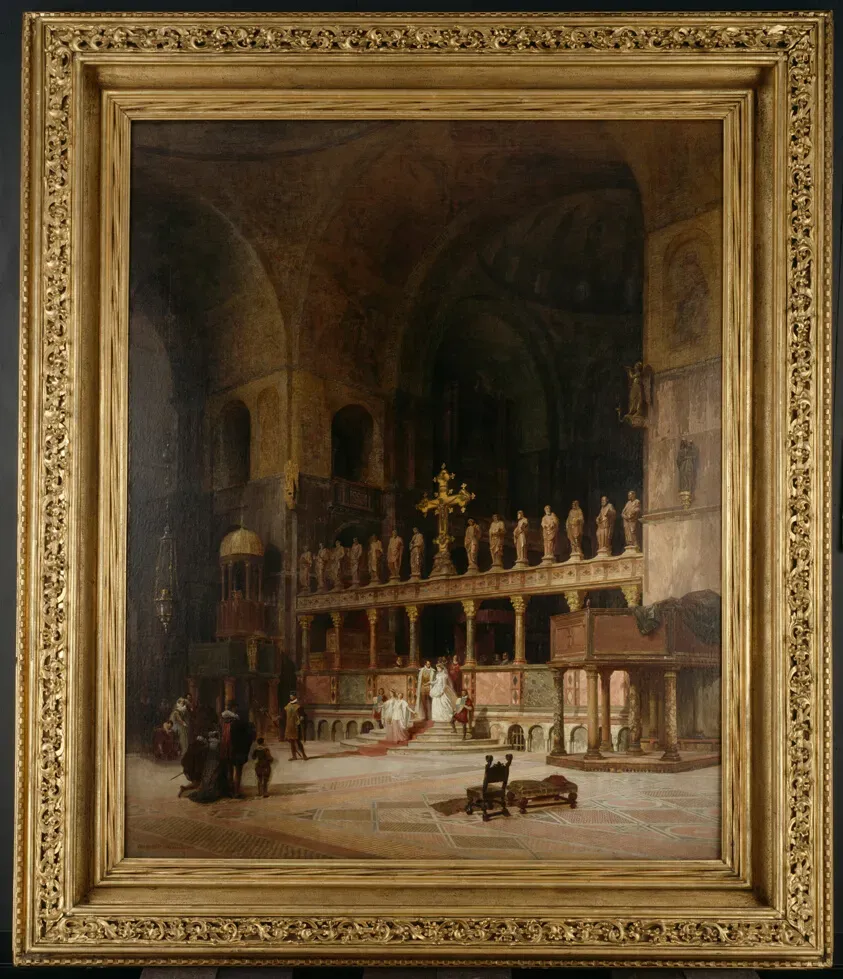Table of Contents
So, your church is thinking about adding a playground. Great idea, right? A place for kids to burn off energy while parents connect, maybe even draw in new families. It sounds straightforward enough until you start looking into it and realize you're not just buying a swingset from the local big box store. You're entering the world of church commercial playground equipment, and suddenly terms like ASTM, IPEMA, and fall height are being thrown around. It's more than just swings and slides; it's a significant investment with real responsibilities.
Why Churches Invest in Commercial Playgrounds

Why Churches Invest in Commercial Playgrounds
More Than Just Swings and Slides
Let's be honest, church budgets aren't usually overflowing with cash for non-essentials. So, why drop significant funds on church commercial playground equipment?
It's simple: it's an investment in community.
A well-designed playground becomes a magnet.
It's a place where families linger after services, where kids can safely burn off that sermon energy, and where parents can actually have a conversation without chasing a toddler around the parking lot.
Think of it as low-key outreach.
You're not just offering spiritual guidance; you're providing a tangible, fun resource that meets a real need for families in the neighborhood.
It signals that your church isn't just a building that opens on Sunday mornings, but a vibrant hub for the community.
Creating a Safe, Welcoming Space
Beyond just being a nice perk, investing in quality church commercial playground equipment is about providing a safe environment.
Parents are understandably cautious about where their children play.
Having a dedicated, properly maintained, and certified playground tells them you take their child's safety seriously.
It's a trust builder.
It also fills a gap in many communities where safe, public play spaces might be limited or poorly maintained.
Offering a clean, secure playground can make your church grounds a preferred spot for families, even those who aren't regular attendees.
It’s providing a service, plain and simple, and that kind of service resonates.
So, why make the leap to commercial-grade gear?
- Safety: Meets stricter standards than residential sets.
- Durability: Built to withstand heavy use and weather.
- Accessibility: Options available for children of all abilities.
- Longevity: Designed to last for years, reducing replacement costs.
- Community Appeal: Attracts families and encourages lingering.
- Lower Liability: Proper certification can reduce insurance headaches.
Key Safety Standards for Church Commercial Playground Equipment

Key Safety Standards for Church Commercial Playground Equipment
Why Standards Aren't Just Bureaucracy
so you've decided a playground is a good move for the church. Now comes the part that makes some people's eyes glaze over: safety standards. Look, nobody wants to think about kids getting hurt, but ignoring these rules is basically inviting trouble. We're talking about church commercial playground equipment, which means it's intended for public use, not just your grandkids in the backyard.
That brings a whole different level of responsibility. Organizations like the ASTM (American Society for Testing and Materials) and the CPSC (Consumer Product Safety Commission) have spent years figuring out how to make these things safe. They set the benchmarks for everything from how far apart swings should be to what kind of surface needs to be under climbing structures. Following their guidelines isn't just about avoiding lawsuits; it's about doing the right thing to protect the kids who will be playing there.
Decoding the Alphabet Soup: ASTM, CPSC, and IPEMA
When you start shopping for church commercial playground equipment, you'll see letters like ASTM and CPSC pop up constantly. ASTM F1487, for example, is the primary standard for playground equipment safety. The CPSC puts out public safety handbooks based on research and injury data. Then there's IPEMA (International Play Equipment Manufacturers Association), which is a third-party certification program. Manufacturers can have their equipment certified by IPEMA, meaning an independent lab checked that it meets those crucial ASTM and CPSC standards.
Think of IPEMA certification as a seal of approval. It's a manufacturer saying, "Yep, we built this according to the rules, and someone else verified it." This is non-negotiable for church commercial playground equipment. It covers things like preventing head entrapment, ensuring there are no pinch points, and making sure platform guardrails are the right height. It's the nitty-gritty stuff that prevents common playground injuries.
Here are some key safety areas these standards address:
- Required Use Zones: The clear space needed around equipment.
- Fall Height & Surfacing: Matching the surface material (mulch, rubber tiles, etc.) to the highest point a child could fall from.
- Equipment Spacing: How far apart different pieces should be.
- Component Integrity: Strength and durability of materials and connections.
- Entrapment Hazards: Preventing heads, limbs, or clothing from getting stuck.
- Accessibility: Guidelines for including children with disabilities (often referencing ADA standards).
Selecting the Right Church Commercial Playground Equipment

Selecting the Right Church Commercial Playground Equipment
Figuring Out Who's Actually Playing
Alright, so you're past the safety standards hurdle and ready to pick some cool stuff. But before you get lost in catalogs filled with twisty slides and climbing walls, pump the brakes. Who is this playground really for? Toddlers? Grade-schoolers? A mix? Investing in church commercial playground equipment means thinking about the age range you expect to serve most often.
A structure perfect for 8-year-olds is going to be totally inappropriate (and unsafe) for a wobbly 2-year-old. Trying to jam equipment for every single age group into one small space usually ends up serving no one well. Get a realistic picture of your primary users. Walk around your neighborhood, see what ages are represented in your church families. This isn't guesswork; it's figuring out how to get the most bang for your buck and, more importantly, keep everyone safe and entertained.
Balancing Fun with Function and Durability
you know your audience. Now, what kind of gear do you actually need? This is where the fun meets the practical. You want exciting features, but they also need to hold up to years of enthusiastic use (and maybe the occasional mischievous teenager after hours). We're talking church commercial playground equipment here, built tough, not the kind that gets wobbly after a single summer.
Materials matter. Steel posts are standard for a reason – they're strong. Plastic components should be UV-stabilized so they don't fade and get brittle in the sun. Decks and steps need non-slip surfaces. Think about the climate you're in; extreme heat, cold, or constant rain will affect how different materials perform over time. Don't just pick the prettiest colors; pick the stuff that will still be standing tall years from now.
- Consider Age Groups: Toddler (6-23 mos), Preschool (2-5 yrs), School-Age (5-12 yrs).
- Assess Your Space: Size, shape, slope, sun exposure, and drainage.
- Think About Flow: How kids will move between different play zones.
- Look at Materials: Steel, plastic, wood (less common for commercial), recycled options.
- Factor in Maintenance: Some materials and designs require more upkeep than others.
- Don't Forget Accessibility: Ramps, transfer stations, and accessible swings are crucial.
Working with the Pros (and Asking the Tough Questions)
Unless you have a certified playground designer on your church board (and let's be real, who does?), you're going to work with a vendor. This is not the time to pick the cheapest option just because. You need a reputable company that specializes in church commercial playground equipment and understands those safety standards we talked about.
Ask for references. See if they have examples of playgrounds they've installed for other churches or community groups. A good vendor will help you design a layout that fits your space and budget while meeting all safety requirements. They should be able to explain their products' certifications clearly and provide detailed specifications. Don't be afraid to ask about warranties, installation processes, and what kind of ongoing support or maintenance advice they offer. This is a partnership, not just a transaction.
Funding and Budgeting for Your Church Playground Project
Facing the Real Cost of Commercial Playgrounds
Let's talk money. Building a playground isn't like buying a new coffee machine for the fellowship hall. Church commercial playground equipment, installed correctly with proper surfacing, runs into serious cash. We're talking tens of thousands, maybe even six figures depending on size, complexity, and site work needed. It’s easy to get excited looking at the shiny catalogs, picturing kids laughing, but someone has to pay the bill.
You can't just wing this. You need a clear budget that accounts for the equipment itself, shipping (which can be substantial), site preparation (grading, drainage), the safety surfacing (often the most expensive part per square foot), installation (unless you have incredibly skilled and insured volunteers), and maybe even fencing or seating. Get quotes, understand what's included, and build in a contingency fund. Things always cost more than you think.
Creative Ways to Raise the Needed Funds
deep breaths. It's a lot, but it's not impossible. Churches have funded bigger projects than this. Think beyond the usual Sunday offering plate. A dedicated campaign for the church commercial playground equipment can rally the congregation. Frame it as an investment in the future, in families, in the community's well-being. Share the vision.
Consider grants. Many foundations, local businesses, and even national organizations offer grants for community projects, especially those focused on children, health, or accessible spaces. It takes work to apply, but the payoff can be huge. Host specific fundraisers – a 'Buy a Bolt' or 'Sponsor a Swing' campaign, a community fun run, a silent auction. Get creative and get the whole church involved; people are often more willing to donate to a tangible project they can see and use.
Common Funding Avenues:
- Dedicated Capital Campaign within the Church
- Grant Applications (Community Foundations, Corporate Giving, Health/Wellness Grants)
- Specific Fundraisers (Events, Product Sales, Donation Drives)
- Major Donor Outreach
- Partnering with Local Businesses or Community Groups
- Allocating Reserve Funds
Installation and Care for Church Commercial Playground Equipment

Installation and Care for Church Commercial Playground Equipment
Getting the Structure Up Right
So, the shiny new boxes of church commercial playground equipment have arrived. Now comes the moment of truth: putting it all together. This isn't like assembling IKEA furniture, folks. Get this wrong, and you've created a hazard, not a play space. Safety standards dictate specific tolerances, bolt torques, and anchoring methods. Trying to save a buck by having a well-meaning but inexperienced volunteer crew tackle this is a gamble you absolutely should not take.
Most reputable vendors offer installation services, and while it adds to the cost, it's money well spent. They have certified installers who know the equipment, understand the safety requirements inside and out, and have the right tools for the job. If you *must* use volunteers, ensure they have significant construction experience, are properly supervised by someone knowledgeable about playground installation, and that you've clarified liability with your insurance provider. Cutting corners here is asking for trouble down the line.
Laying Down the Safety Net: Surfacing
You've got the structure standing tall. Great. But that's only half the battle for your church commercial playground equipment. What goes *under* it is just as critical, if not more so. That safety surfacing isn't just decorative; it's the primary protection against serious head injuries from falls. Concrete, asphalt, or even plain old grass won't cut it.
The type and depth of surfacing (mulch, engineered wood fiber, rubber tiles, poured-in-place rubber) depend directly on the fall height of the equipment. Get this wrong, and you're not meeting safety standards. Installation needs to be precise – maintaining the correct depth, ensuring proper drainage, and providing a consistent, impact-absorbing layer across the entire use zone. Don't skimp here; this is the single most important safety feature.
Surfacing Type | Pros | Cons | Maintenance Level |
|---|---|---|---|
Engineered Wood Fiber (EWF) | Cost-effective, natural look | Requires regular raking/topping off, can hide debris | High |
Rubber Mulch | Durable, available in colors | Can retain heat, potential for 'tire smell', cost | Medium |
Rubber Tiles | Accessible, low maintenance, clean look | Higher upfront cost, seams can separate | Low |
Poured-in-Place Rubber (PIP) | Seamless, highly accessible, customizable colors/designs | Highest upfront cost, professional installation required, can crack over time | Low to Medium |
Keeping it Safe: Ongoing Maintenance
The installation is complete, kids are playing, everyone's happy. Job done? Not by a long shot. Church commercial playground equipment requires regular inspection and maintenance. Think of it like owning a car; ignore the oil changes, and you're asking for a breakdown. Bolts loosen, wood splinters (if applicable), plastic cracks, and surfacing compacts or gets displaced.
You need a schedule for routine checks – weekly for high-use areas, monthly for a more thorough look. Are there any trip hazards? Is the surfacing depth still adequate? Are there any broken or worn parts? Are there signs of vandalism? Have a designated person or team responsible for this. Keep a log of inspections and any repairs made. This isn't just busywork; it's essential for maintaining the safety certification and preventing injuries. A well-maintained playground stays safe, looks inviting, and lasts longer, protecting your investment in church commercial playground equipment.
Making the Playground Happen
Getting church commercial playground equipment installed is less about divine intervention and more about solid planning and execution. You've got to understand the safety rules, pick the right stuff for your space and age groups, figure out where the money's coming from, and then make sure it's put in correctly and looked after. It's a significant project, no doubt, but building a genuinely valuable asset for the community is worth the effort. Just make sure you're doing it right, because nobody wants a playground that's a hazard or sits empty.